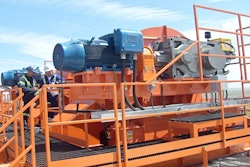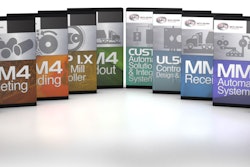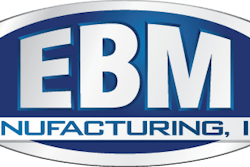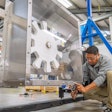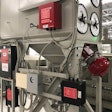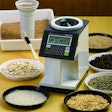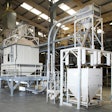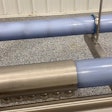
When many business owners and execs in the agriculture industry hear the phrase “Research & Development (R&D) Tax Credit,” they stop listening -- because they assume it doesn’t apply to them.
But qualifying for the R&D Tax Credit, which can be worth hundreds of thousands of dollars if not more, doesn’t require that a company have formal R&D operations or employ scientists, engineers or others with specialized degrees.
The R&D Tax Credit was created to reward investment in both new and improved products along with new and improved processes, and nearly every commercial venture in the agriculture industry does qualifying work, regardless of its size. This can include concept development of a new product, new manufacturing methods, line extensions, quality improvements, and changes made to meet regulatory standards.
Below, Cole Marr, research & development director with Sensiba San Filippo, answers some frequently asked questions.
Q: What is the R&D tax credit?
A:The federal R&D tax credit, also known as the Research and Experimentation (R&E) tax credit, provides a general business credit for qualifying project expenditures. Additionally, many states offer R&D credits that are very similar in nature to the federal credit. It is important to note that this is a general business credit, not a deduction, or “write-off” as many people might think of it. A tax credit reduces taxes due dollar for dollar, keeping valuable resources in the businesses pocket.
来determine if a project (or portion of a project) is eligible to generate an R&D credit, the business component (the R&D credit term for “project”) and associated activities must satisfy four general requirements. The project must be technological in nature and have technological uncertainty with regard to capability, methodology, or design. Additionally, you must be engaging in the project for a permitted purpose and demonstrate a process of experimentation. A permitted purpose is something related to a new or improved product or process function, performance, reliability, or quality. It is also worth mentioning the qualifying projects don’t need to be revolutionary to the world, they can be evolutionary to your business, and there is no requirement that the project be successful.
Q: How much can it save me if my business qualifies?
A:Thanks to the complexity of the formulas used to calculate the federal R&D credit, the benefit can range from approximately 6%-10% of qualifying expenditures. In addition, state R&D tax credits can potentially double the overall benefit. So, in general terms a company can expect to see anywhere from 6%-20% of their R&D expenses returned to them via tax credit depending on geographic location and individual business characteristics.
Q: What types of expenses can qualify?
A:There are three main expense categories that can be included for projects or activities that meet the general eligibility requirements. The three categories are wages, supplies, and contract research. Wages consist of the taxable compensation paid to employees who spent a portion of their time working on R&D projects. Their time spent working directly on a project, overseeing multiple projects, or assisting in a small component of a project can all be included. Supplies typically consist of materials used up to build or test a new product or improvement. For example, if the R&D project is a new processing technique, the expenses associated with testing that technique may be includable. Finally, contract research is any outside vendor paid to provide assistance with an R&D project. Often these are individuals or companies that are paid to perform detailed engineering work, test and certify new product formulations, or calibrate and maintain equipment used for R&D.
Q: We have been doing these types of projects for years, why haven’t we heard about this before?
A:研发信贷是一种经常被忽视和misunderstood tax incentive. Because the guidelines for what can be rewarded with the credit are broad, the requirements for demonstrating eligibility and quantifying the credit amounts are substantial. Frequently, when a business does not have R&D in a traditional sense, accountants overlook the pockets of potential opportunity within a client. This doesn’t make them a bad accountant, or even signal any particular cause for concern. Identifying R&D tax credit opportunities requires such a specific expertise it takes someone with highly specialized knowledge and experience to identify eligible activities. If a company has overlooked the R&D credit in the past, the potential exists to look back to prior years to recoup the missed credit amounts. Typically, the available look back period is 3 tax years. So, for example, if a company claims a credit for 2020, they may be able to go back and claim the missed credits for 2017, 2018, & 2019.
Q: If we think we might be doing something that qualifies, what do we do next?
A:The best course of action is to reach out to your tax advisor or an R&D tax credit specialist to discuss the opportunity. Typically, a short conversation with someone knowledgeable about the credit and the process of claiming it, will make clear the potential opportunity. The end of the calendar year is a great time to investigate the R&D tax credit as you review 2020 and begin looking forward to what next year will bring. If the R&D tax credit is something that makes sense for your business, it can become a valuable tax planning tool to factor into your annual analysis.
Q: What are the risks of claiming the R&D tax credit?
A:与研发的税收cre相关的风险dit are similar to the risks associated with any tax filing. The audit process can take many different paths, but typically R&D tax credit audits can be completed in the standard course of a general audit. The IRS does have engineers that are utilized as technical experts for particularly technical or unorthodox credit claims. As long as a taxpayer, and especially the taxpayer’s tax team, has completed the proper due diligence in compiling the R&D tax credit claim, the audit process shouldn’t be painful or scary.
AboutSensiba San Filippo
Sensiba San Filippo (SSF), a Pleasanton, CA-based CPA and business consulting firm focused on providing superior client service, deep technical expertise, and a passion for the industries it serves.





